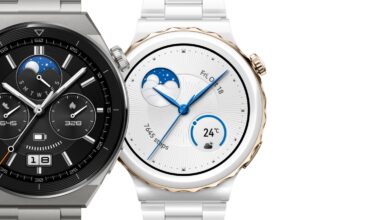
The Chinese electronics company Huawei is badly hit. Due to US sanctions, Huawei is boycotted by large US corporations. Market access in the USA is also made more difficult for the Chinese group. The presentation of the new top smartphone Mate 30 in Munich can be understood as a reaction to these international problems. It almost seems as if Huawei is trying to show what the West is now going to miss in the sense of a defiant Now more than ever!. Due to the Chinese-American difficulties and their consequences, it is hardly to be expected that the market will sell like hot cakes.
The effects of the US sanctions
The effects of the US sanctions are clear: Huaweis’s new smartphone will come onto the market without Google services, without WhatsApp and without Facebook. It must not use Google’s Android system and will not be equipped with the Play Store where apps can be purchased. All of these are bad starting conditions for a new smartphone.
Richard Yu, who is responsible for the company’s smartphone division, makes no secret of the fact that these circumstances pose a major problem for Huawei. Nevertheless, he seems to be convinced by the new smartphones – in addition to the Mate 30 his Pro version was also presented – and presents them accordingly self-confidently.
Huawei relies on confrontation
The fact that Huawei is by no means prepared to give in is clear at the latest after the product presentation. The Chinese manufacturer seems to have thrown everything into the balance in order to develop a device that is as powerful and high-class as possible and that is supposed to put Western smartphones in the shade.
Starting with the processor, which offers more power than a single user can consume, through the display, which resolves with razor sharp resolution, to the battery, which is technically superior to the top smartphones of competing manufacturers and yet lighter, Huawei wants to outdo Apple, Google and Co in every conceivable area.
The high-end device boasts 21 built-in antennas, of which fourteen support the 5G radio standard. It offers more display space than the iPhone 11 Pro Max and is still more handy. The design is almost frameless and bulges beyond the sides. This list can be continued indefinitely. What Huawei is trying to achieve with this is quite clear: it is a demonstration of the strength that will show the West what it will miss if the boycott of Huawei is not abandoned.
Display and camera
The display and the camera are probably the biggest trump cards. The OLED display curved over the edges measures 6.62 inches diagonally. In the Pro version it comes to 6.53 inches. Only a four millimeter wide edge remains at the top and bottom. The edges over which the display curves are free of buttons. The volume control can be opened by tapping twice and positioned as desired. Huawei uses this and similar tricks to save as much space as possible, which in turn is used for the huge display. The Chinese company Apple, Google, Samsung and Co, which work towards the same goal and rely on Notches and Co, are thus making old things look like.
Another heart of the camera is the 40 megapixel quad camera, which is only used in the Pro model. The normal Mate 30 is at least equipped with a triple camera. The cameras can record 4K videos, slow down videos to super slow motion, create real-time bokeh effects or use a multiple zoom with 45 levels. Huawei is clearly targeting professional filmmakers and photographers.
The new devices also look good on the outside. For example, the back of the smartphones is coated with a special surface that is immune to fingerprints despite its shiny character. The high-ranking main camera is housed in a striking porthole. If you want it even more elegant, you can choose a vegan leather version or a sports car version.
The display is adaptive and recognizes the viewing angle of the user. It then automatically changes the format. Gesture control is also possible from a distance. The operating system used is Android 10 with EMUI 10. The operation of the smartphone will therefore not change compared to the predecessor models.
Will Huawei be able to assert itself?
However, all this does not conceal the massive problems facing the manufacturer. Huawei is largely uninteresting to Western users without Play Store and without US apps such as WhatsApp, Facebook and Instagram. If the company does not come up with convincing solutions to this problem, it will not be able to assert itself with such high-end devices.
Huawei has already presented a first approach: They are working on an alternative to the Play Store that will be developed with a billion US dollars. Huawei wants to work with financial incentives to encourage developers to make their apps available in their own stores. The aim is to solve the attractiveness problem created by the US sanctions. Whether this will succeed is unclear.
Will the devices be available in Germany?
It is not yet clear whether the devices will also be sold in Germany. However, Huawei has already made a statement about the Euro prices: The Mate 30 should cost 799 Euros, the Pro version should be available for 1,099 Euros and the special sports car editions for 2,095 Euros. A market start in some EU countries is thus aimed at.













